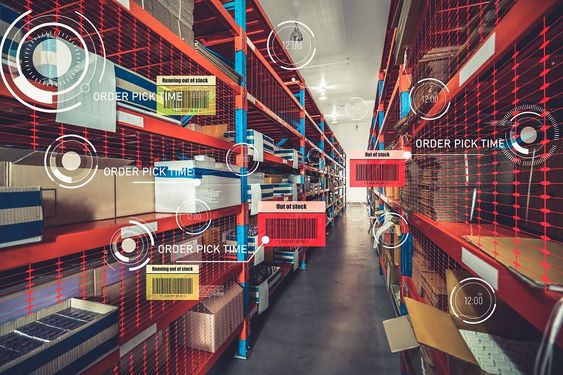In the modern era of logistics and supply chain management, the integration of technology into warehouse operations has become more than a trend—it’s a critical pivot transforming the industry. Maxtrans in Charlotte serves as a leading example of how innovation in technology can vastly improve warehouse management. In this comprehensive dive, we’ll explore the impact of technological advances on the logistics landscape, and how Maxtrans continues to redefine warehouse efficiency.
Introduction
As the backbone of trade and distribution, warehouses are the heartbeat of commerce, especially in bustling logistics hubs like Charlotte. With the emergence of e-commerce giants and the acceleration of global trade, warehouse management has been propelled into the technological age. Businesses like Maxtrans are capitalizing on these technological advancements to stay competitive and manage complex supply chains with an unprecedented level of precision.
Benefits of Technology in Warehouse Management
Improved Efficiency and Productivity
Within the seamless rows of goods and the flurry of activity, technology serves as an orchestrator—enhancing workflows and bolstering productivity. From sensors that track inventory levels to automated guided vehicles that ferry products from zone to zone, technology has streamlined the once-laborious processes, freeing human workers for more complex tasks.
Enhanced Inventory Management
Gone are the days when inventory tracking was a manual, error-prone process. Modern technology delivers sophisticated systems that offer real-time inventory insights, allowing managers to mitigate the risks of overstocking or shortages and ensure just-in-time delivery models thrive.
Real-time Tracking and Visibility
With every scan, click, or swipe, data flows into centralized systems, providing warehouse managers with a bird’s eye view of operations. Real-time tracking technologies enable swift responses to market demands and swift adaptability in operations.
Streamlined Operations and Cost Savings
By deploying warehouse automation, Maxtrans capitalizes on the reduction of waste—be it time, materials, or labor. Technology minimizes redundancy and promotes optimal utilization of resources, directly impacting the bottom line with cost savings.
Optimized Labor Management
The role of the warehouse worker evolves with technology. Maxtrans has harnessed tech to direct their workforce efficiently, forecasting labor needs accurately, and ensuring personnel operates in sync with automated systems.
Maxtrans: A Case Study in Charlotte
Introduction to Maxtrans and its Warehouse Management Operations
Maxtrans is not just riding the wave of technological advancement— it’s shaping the tide to suit its stride. As a logistic leader, Maxtrans has made bold strides to integrate cutting-edge solutions into its Charlotte warehouse.
Technology Solutions Implemented by Maxtrans
In practical terms, this integration sees Maxtrans leveraging tools like real-time data analytics, which cuts through the potential clutter of digital information, refining raw data into actionable insights. Orders are processed and fulfilled with precision and speed, setting a benchmark for operational efficiency in the industry.
Results and Impact of Technology on Operations and Business Performance
Implementing these systems hasn’t just been about keeping up with the times; it’s yielded tangible benefits. The company reports heightened supply chain visibility, leading to more accurate demand forecasting—a critical edge in this fast-paced market. Moreover, Maxtrans has observed measurable gains in productivity and cost-efficiency, cementing these tech tools as indispensable assets.
Trends in Warehouse Management Technology
Automation and Robotics
The image of robotics in warehousing is no longer futuristic—it’s the here and now. Automated storage and retrieval systems (AS/RS) and drones for inventory management are becoming standard, offering both accuracy and efficiency.
Artificial Intelligence and Machine Learning
AI and machine learning algorithms have transformed mountains of data into intelligent forecasts and decision-making tools. Maxtrans taps into these for predictive analytics to anticipate future trends.
Internet of Things (IoT)
The IoT framework has created environments where machines, sensors, and humans interface seamlessly, exchanging data dynamically, and ensuring that all parts of the warehouse environment are interconnected and communicative.
Cloud Computing and Data Analytics
Cloud platforms host and serve real-time data to decision-makers anywhere, ensuring flexibility in operations. Maxtrans’s utilization of cloud data analytics improves responsiveness to the ebb and flow of the logistics demand.
Warehouse Management Systems (WMS)
These systems are the silent conductors, coordinating every move within the Maxtrans warehouse. Implementation has been critical in reducing error rates and optimizing space utilization.
Challenges and Considerations
Initial Investment and Implementation Costs
While the benefits are clear, hurdles like the initial capital investment loom large. Maxtrans met this challenge with strategic planning and a phased adoption approach, allowing for the flexibility to adapt as RoI began to materialize.
Workforce Training and Adoption
Technology is only as effective as the people using it. Maxtrans has invested in comprehensive training programs to ensure technology adoption is smooth and effective, equipping their workforce with the skills necessary to interact with innovative systems.
Data Security and Privacy Concerns
As digital infrastructures expand, so does vulnerability to cyber threats. Maxtrans mitigates these risks by prioritizing robust cybersecurity measures and protocols to safeguard data integrity.
Integration with Existing Systems
The challenge of integrating new technology with legacy systems was met head-on by Maxtrans through careful planning and expert consultation, ensuring a seamless transition.
Scalability and Future-proofing
Maxtrans’s approach ensures that technology choices are not just about current benefits, but also about future adaptability and scalability.
The Future of Warehouse Management
As projections and predictions abound about the next wave of technological innovation, it’s evident that companies like Maxtrans must remain at the cutting edge to keep ahead. From autonomous drones to augmented reality for picking processes, the landscape of warehouse management is poised for further upheaval.
Conclusion
Through the lens of Maxtrans’s innovative operation in Charlotte, we clearly see the vast opportunities technology offers to redefine warehouse management. As a sage guidepost for others drawn towards this path to technological transformation, Maxtrans stands out as a testament to what’s possible when forward-thinking marries strategic action.
For the logistics professionals, business owners, and tech enthusiasts of Charlotte, this is a clarion call to embrace technology in earnest. Doing so unlocks operational effectiveness, driving competitive advantage in a market that never stands still.

